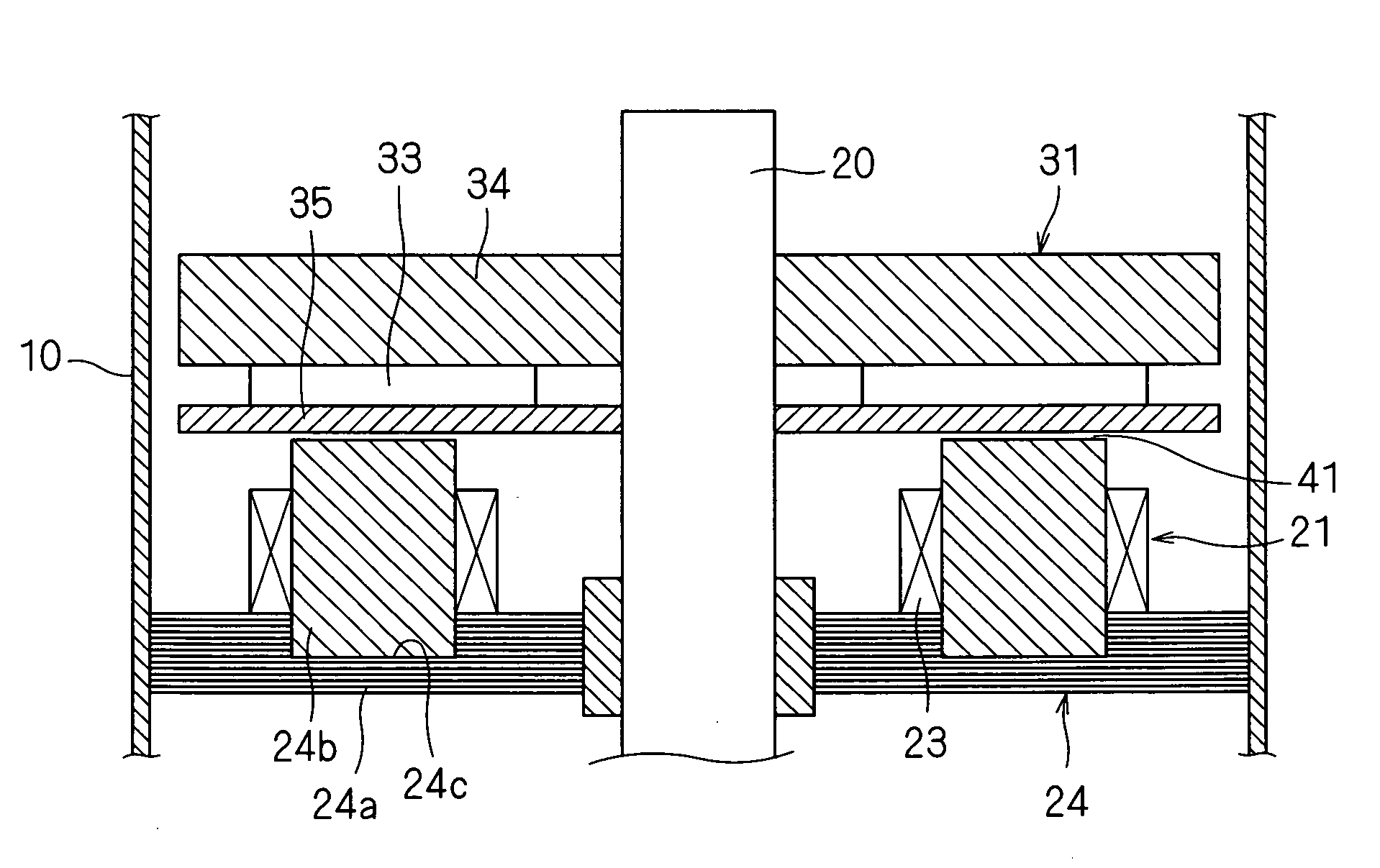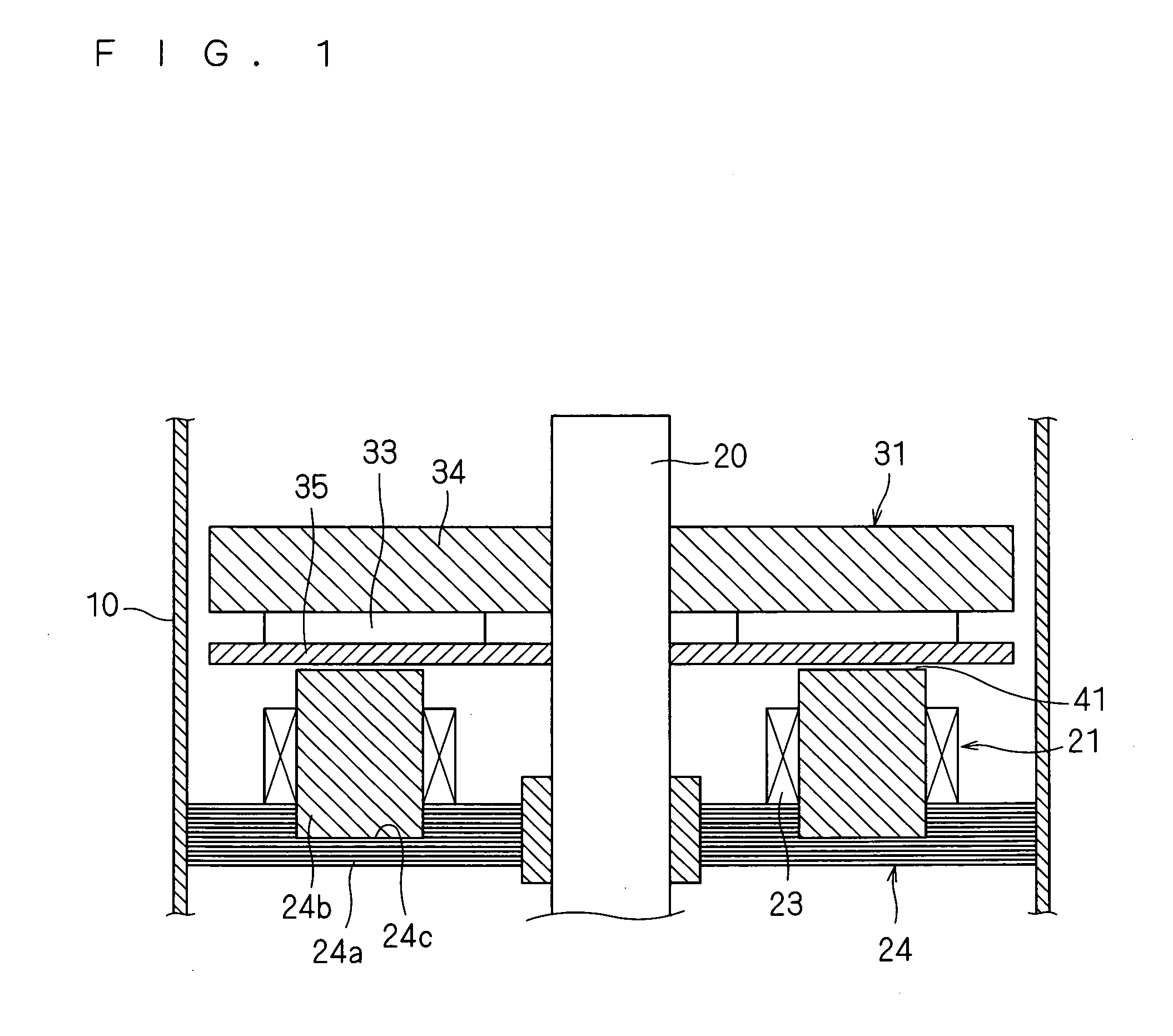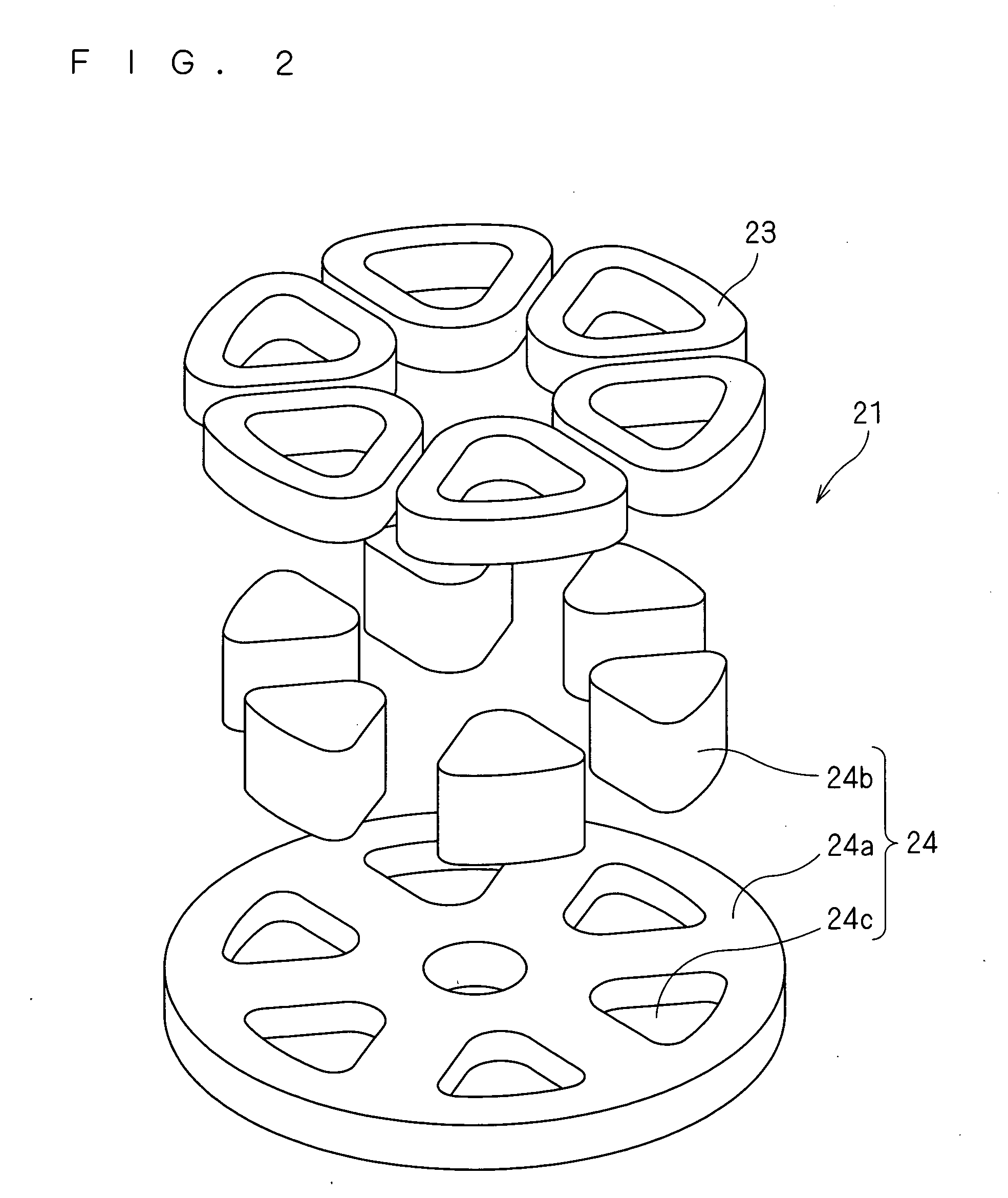Armature Core, Motor Using It, and Its Manufacturing Method
a manufacturing method and technology of a magnet core, applied in the field of motors, can solve the problems of limiting the shape of teeth, difficult to design such a high-density location, and complicated manufacturing process, and achieves high harmonic content of magnetic flux, high permeability, and large variations in magnetic flux density
- Summary
- Abstract
- Description
- Claims
- Application Information
AI Technical Summary
Benefits of technology
Problems solved by technology
Method used
Image
Examples
embodiment a1
[0143]FIG. 1 is a cross-sectional view of the outlines of a motor according to embodiment A1, and FIG. 2 is an exploded perspective view of a stator of the motor shown in FIG. 1.
[0144]The motor according to this embodiment A1, as shown in FIG. 1, includes a stator 21, a rotor 31 located above this stator 21 with an air gap 41 therebetween, and a shaft 20 that is fixed to this rotor 31 and transmits a torque of this rotor 31 to a load and that extends out of this rotor 31 to be rotatably supported by a bearing (not shown). The above-mentioned rotor 31 rotates on the axis of the shaft 20, or a certain rotation axis.
[0145]The above-mentioned stator 21 includes a stator core 24 attached to the inside of a casing 10 by, for example, press fitting or shrink fitting, and coils 23 attached to this stator core 24.
[0146]The above-mentioned stator core 24 includes an annular ring-shaped back yoke 24a located so as to be generally orthogonal to the shaft 20, and teeth 24b located upright on the...
embodiment a2
[0186]FIG. 13 is a cross-sectional view of the outlines of a motor according to embodiment A2.
[0187]The motor according to this embodiment A2, as shown in FIG. 13, includes a rotor 431 attached to a shaft 420, and two stators 421 located on both axial sides of the rotor 431. The above-mentioned rotor 431 rotates on the axis of the shaft 420, or a certain rotation axis. These stators 421 each are the stator 421 shown in FIG. 9 according to embodiment A1. The above-mentioned rotor 431 includes two rotor plates 435 and a permanent magnet 433 located between those two rotor plates 435. Locating the stator 421 to sandwich the above-mentioned rotor 431 from both axial sides enhances flux linkage and improves output.
[0188]While the stators 421 of the motor according to the above-mentioned embodiment A2 are identical in configuration to the fourth alternative example shown in FIG. 9, the presence of the two back yokes 424 located at a certain distance inside the casing 10 have the effect of...
embodiment a3
[0199]FIG. 15 is a cross-sectional view of the outlines of a motor according to embodiment A3. The motor according to this embodiment A3, as shown in FIG. 15, includes the rotors 31 on both sides of a stator 621. In FIG. 15, wide end portions of the teeth 624b improve air-gap permeance.
[0200]As shown in FIG. 15, the plurality of teeth 624b of a stator core 624 have wide portions 624c provided on the sides facing the rotors 31, which increases the area that faces the rotors 31 and thereby enhances flux linkage. Further, attractive forces acting from the above-mentioned stator 621 on the rotors 31 on both axial sides can cancel thrust force acting on the rotors 31 and the shaft 20 and can also reduce force acting in the thrust direction on a bearing that supports the shaft 20.
[0201]At this time, the presence of the wide portions 624c at both the ends of the teeth 624b hinders the teeth 624b from being axially inserted into a back yoke 624a.
[0202]Thus, as shown in FIG. 16, the back yo...
PUM
| Property | Measurement | Unit |
|---|---|---|
| depth | aaaaa | aaaaa |
| stress relaxation | aaaaa | aaaaa |
| shape | aaaaa | aaaaa |
Abstract
Description
Claims
Application Information
 Login to View More
Login to View More - R&D
- Intellectual Property
- Life Sciences
- Materials
- Tech Scout
- Unparalleled Data Quality
- Higher Quality Content
- 60% Fewer Hallucinations
Browse by: Latest US Patents, China's latest patents, Technical Efficacy Thesaurus, Application Domain, Technology Topic, Popular Technical Reports.
© 2025 PatSnap. All rights reserved.Legal|Privacy policy|Modern Slavery Act Transparency Statement|Sitemap|About US| Contact US: help@patsnap.com



